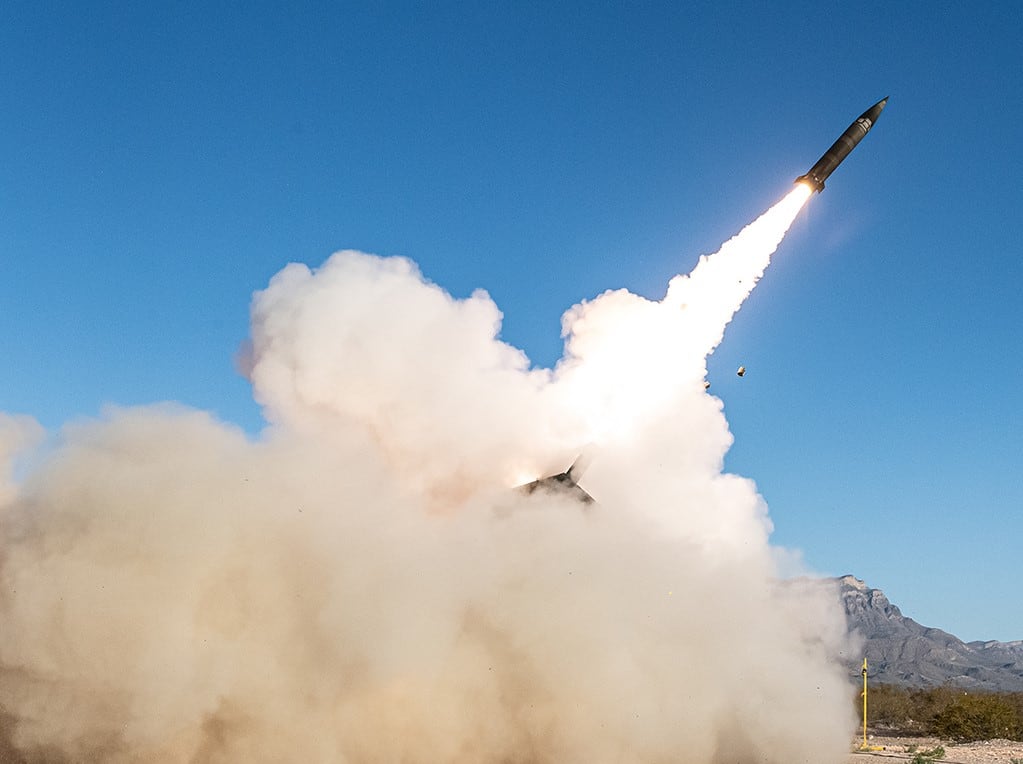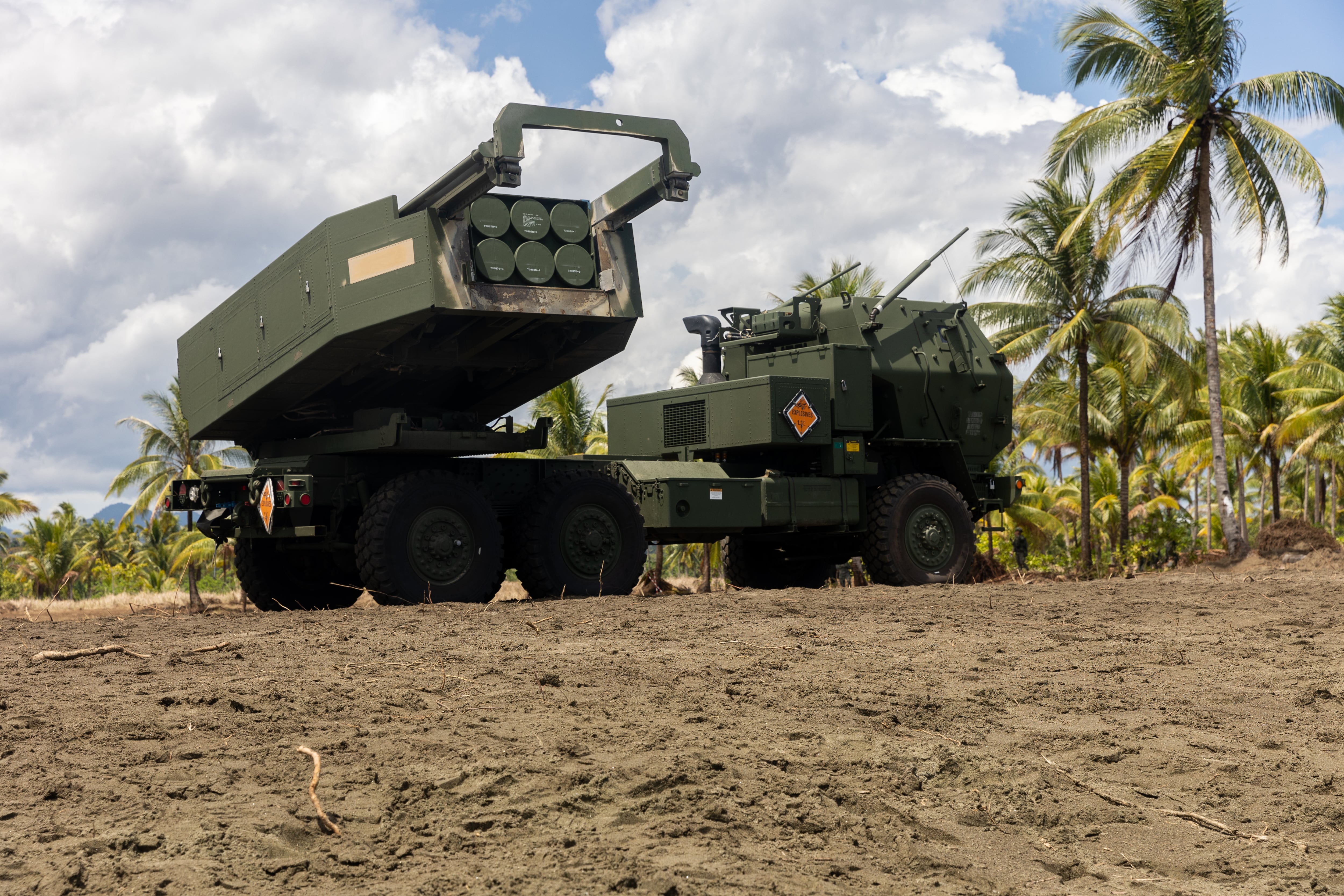Top generals in the Pacific are aiming to create “positional advantage” using a combination of land forces and maritime assets to counter Chinese military aggression in the region.
Some units, such as the Japanese Self-Defense Force, are positioned inside the first island chain around China. While others, such as the Australian Defence Force and Armed Forces of the Philippines, are farther out but plan to use terrain as they monitor Chinese military maneuvers.
Leaders from those three militaries discussed their respective roles alongside the head of U.S. Army Pacific, Gen. Ronald Clark, on Wednesday at the Association of the U.S. Army’s annual Land Forces Pacific conference in Honolulu, Hawaii.
Lt. Gen. Roy Galido, commanding general of the Philippine Army, said changes in the operational environment, in part due to modern technologies, have “radically altered the definition of key terrain.”
RELATED

Some of that is more ships and boats coming under the control of traditional land forces, while other influences include longer-reaching fires that can hold Chinese ships at bay.
Ultimately, though, Clark said, it will take a combination of those nations and others to effectively contain Chinese military action in the region.
“It’s not just about the United States Army, it’s not just about our joint force, it’s about our allies and partners,” Clark said.
Gen. Yasunori Morishita, chief of staff for Japanese Ground Self-Defense Forces, said he sees Japan’s location as a key block to Chinese expansion.
For Lt. Gen. Simon Stuart, chief of the Australian Army, ongoing, daily campaigning is key to winning the competition phase of any potential conflict, which leaders hope will ultimately deter conflict overall.
Stuart pointed to recent acquisitions of ships and light vehicles that his country has approved as ways to “achieve sea denial and kill ships from the land, dominate key and vital terrain” in the littoral regions, those areas of the sea close to land.
Following Australia’s 2023 defense review, the country began looking to acquire lighter, smaller vehicles for moving in and around littoral zone land features, Defense News previously reported.
At the same time, the Australian military will acquire 28 new ships for its land forces to facilitate that maneuver, the most it’s had since the end of World War II.
Other review recommendations include an enhanced long-range strike capability for multiple domains of warfare. Planners also expect to field a fully enabled and integrated amphibious combined arms land system and a mobile, joint expeditionary theater logistics system, Defense News reported.
On the strike side of the house, the review also recommended acquiring more M142 High Mobility Artillery Rocket Systems, or HIMARS, and including local weapons manufacturing to ensure stock levels.
Adding the HIMARS and the Precision Strike Missile, or PrSM, will give the Australian military greater land and maritime target reach, according to a Journal of Advanced Military Studies article published last fall. The Australian Army will acquire 42 HIMARS, the article notes.
Japan, meanwhile, has built a new amphibious unit and launched its first such ship for the unit in November, U.S. Naval Institute reported.
The maritime asset is key for the island nation to resupply its long island chain. The first ship, the JS Nihonbare, has similar capabilities to the U.S. Army’s Runnymede-class large landing craft, according to USNI.
Ultimately, the unit will contain 10 such vessels, four of which will be in the Nihonbare class, two 3,500-ton transport vessels and four maneuver support vessels.
Elsewhere, the Philippine Army is actively training with U.S. Marines and Army assets, adopting an antiship strike capability of its own and facilitating U.S. strike platforms in their region through recent exercises such as Balikatan and Valiant Shield, officials said.
The Maritime Key Terrain Security Operation recently concluded following an experiment with stand-in force concepts that deployed “low-signature, light-weight formations to various islands in the Batanes and Babuyan Island chains to rehearse Expeditionary Advanced Base Operations, test sensing capabilities, and simulate securing and defending key maritime terrain,” according to a Marine release.
The event included the simulated use of the Marines’ newest weapon, the Navy-Marine Expeditionary Ship Interdiction System, or NMESIS, which deployed onto Batan Island.
“Walking off the C-130 with NMESIS onto that island was one small step for a Marine, and one giant leap for U .S.-Philippine-delivered sea denial capabilities,” said Col. John G. Lehane, commanding officer of the 3rd Marine Littoral Regiment.
Todd South has written about crime, courts, government and the military for multiple publications since 2004 and was named a 2014 Pulitzer finalist for a co-written project on witness intimidation. Todd is a Marine veteran of the Iraq War.





